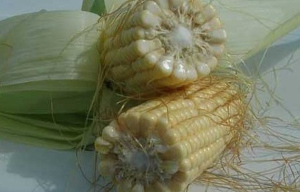Roger Elmore

Figure 1. The yellow corn seedlings reported in multiple fields this week may be indicative of several conditions, but at this time, the widespread nature of these reports indicates they're mostly likely tied to cool wet soils.
Many people in the last few days reported seeing yellow corn (Figure 1). The yellowing is a likely symptom of the cool, wet weather young seedlings experienced since emergence. The symptoms do not necessarily point to a nitrogen or potassium deficiency which may also cause a yellow hue. In addition, corn seedlings subjected to water-saturated soils, soil compaction, and certain herbicide applications may also reflect yellow. However, with the widespread nature of the reports, cool, wet soils and weather are the likely culprits. The other potential causes mentioned would be more field-specific.
Seminal roots including the radical, emerge from the seed; nodal roots normally form about 0.5 to 0.75 inches below the soil surface (Figure 2). At the V3 stage, the nodal and seminal root systems are similar in size. By V6 — when the growing point emerges above ground — plants are completely dependent on the nodal root system. During the transition from the seminal root system to the nodal root system, cool, wet weather often results in yellow corn. Some colleagues have called this corn’s ugly-duckling stage.
Figure 2. Corn development at V3.
When secondary roots develop and with some warmer, sunny days, seedlings should recover quickly. Then, check plant populations keeping an eye out for stand uniformity and plant growth. Let us know what you’re seeing!